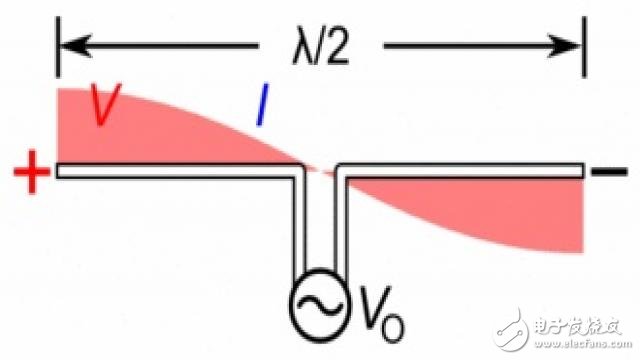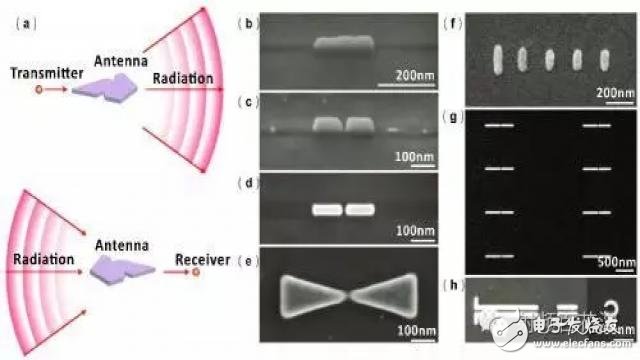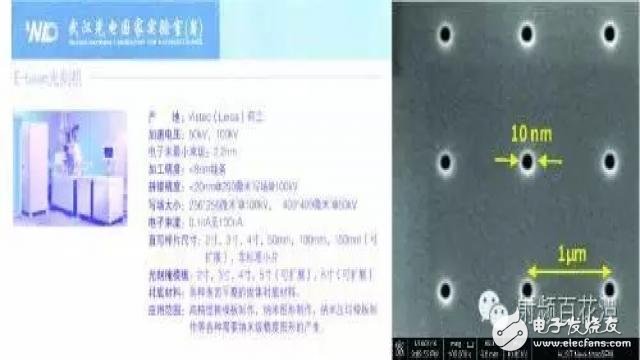The antenna, as defined by Wikipedia, "is a device used to transmit or receive radio waves - or more broadly - electromagnetic waves." For example, in a wireless communication system, an antenna is used to transmit and receive electromagnetic waves in the radio frequency and microwave bands. In our smartphones, there is a built-in planar inverted-F antenna (PIFA) for receiving and radiating electromagnetic signals at 2.4 GHz and 5 GHz.

Dipole antenna
Since the antenna's regulation of electromagnetic waves obeys the basic equation of classical electromagnetics, that is, Maxwell EquaTIons, and Maxwell's equations are formally frequency (wavelength) invariant, that is, Maxwell's equations do not limit the work of the antenna. wavelength. Therefore, many functions of the electromagnetic wave antenna in the radio frequency band (such as frequency selection surface, phased array radar, etc.) can also be realized logically in the optical frequency band.
From a scale perspective, the operating wavelength λ of the antenna is linearly related to the antenna dimension L. Taking the simplest 1/2 wavelength dipole antenna as an example, it consists of two 1/4 wavelength monopole antennas whose length is half of the operating wavelength λ. For a 900 MHz RF antenna, the length is estimated to be L = λ / 2 = (3e8 m/s / 900e6 / s) / 2 = 0.167m. The length of the antenna operating at visible light is estimated to be L = λ / (2n), where n is the refractive index of the medium environment in which the antenna is located [2]. For an optical antenna operating at 680 nm (red light), assuming that the substrate is silicon, L = λ / (2n) = 680 nm / 2 / 3.4 = 100 nm. It can be seen that the first research to solve the optical antenna (optical band electromagnetic antenna) is to be able to experimentally prepare a micro-nano structure comparable to the optical wavelength scale or even smaller than the optical wavelength scale.

Optical antenna
In recent years, with the increasing maturity of "top-down" nanofabrication technology represented by Electron Beam Lithography and Focused Ion Beam Lithography, large-scale processing of nanoscale Metal and dielectric structures have become possible, and research on optical frequency band electromagnetic antennas (referred to as optical antennas) has also become a research hotspot.

Electron beam exposure
The research on optical antennas is very extensive. Here, only the general combing and classification are done to attract the jade.
1. Sub-wavelength-scale light field focusing: Compared with the dipole antenna in the RF band, the optical antenna can converge the optical frequency electromagnetic waves in the free space into the sub-wavelength scale of the antenna surface, greatly improving the photon state. Density is therefore widely used to break through the diffraction limit and enhance the interaction of light with matter (light-matterinteracTIon).
2. Light absorption and photothermal conversion: The material for preparing the optical antenna is the same as the material for preparing the electromagnetic wave antenna of the microwave band, and may be a common metal such as gold, silver, aluminum or copper. However, in the optical frequency band, the metal material is no longer equivalent to a pure conductor like the microwave band, but has a great loss to the electromagnetic wave, that is, the imaginary part of the refractive index of the material is no longer infinite relative to the real part. This characteristic makes the optical antenna increase the loss of light and can be used as an optical absorber. The light energy absorbed by the optical antenna is finally converted into heat energy, which is reflected in the rise of temperature. This property is used in thermal infrared detectors, thermal photovoltaics, and photothermal cancer therapy.
3. Optical filtering, polarization selection and phase manipulation: When optical antennas are fabricated into arrays, there are many novel and interesting features. As mentioned earlier, in the microwave band, there are concepts of Frequency SelecTIve Surface and Phased Array Antenna. In the optical band, optical antenna arrays can also be used to achieve optical wave filtering, polarization selection, and phase steering. For example, the latest issue of the Science cover article is the use of an optical surface array based on an optical antenna array (Nanoantenna array) to adjust the phase of each point of the plane circularly polarized light to achieve ultra-thin planar imaging in the visible light range. lens. It can be seen that the ingeniously designed optical antenna and its array are expected to compress the functions of conventional optical components (filters, polarizers, imaging lenses, etc.) to the thickness of the optical film, that is, planar optical components (FlatOpTIcs ).
At present, optical antennas are a research hotspot in the research field. The research angles and applications are also extensive. Various new research fields based on optical antennas emerge in an endless stream. Therefore, this paper will inevitably hang a leak and can only play a role in attracting jade.
175W Medical Power Supply,175W Medical Device Power Supply,175W Medical Power Adapter,175W Rade Power Supplies
Shenzhen Longxc Power Supply Co., Ltd , https://www.longxcpower.com